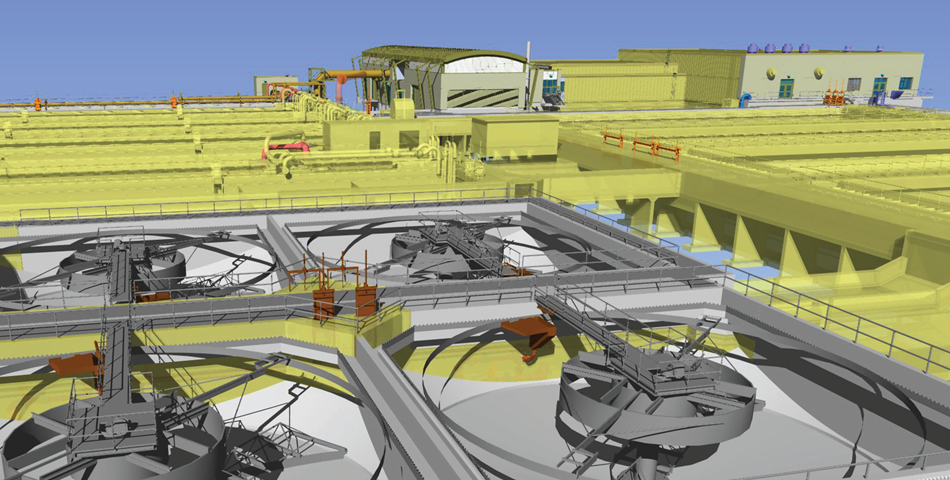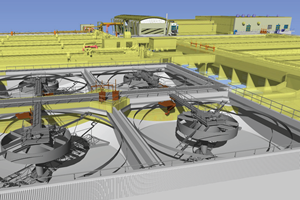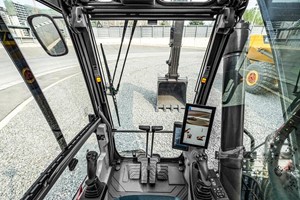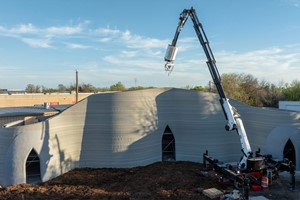The complexity of water and wastewater treatment plant design requires a geographically diverse, multi-disciplined team involving collaboration across consulting firms, contractors, and owners. The steady transition to 3D and intelligent, multi-discipline models is empowering organizations to capitalize on the use of digital engineering models to achieve data integrity and continuous information flow throughout the operational life of these assets. Bentley’s Shaun Severin, a plant design solution consultant, shares insight on the demands and directions of this evolving design engineering discipline.
Q: What is driving the demand for scalable and open 3D design models?
Shaun Severin: There is growing emphasis on applications that can plan, design, operate, and maintain water and wastewater treatment infrastructure more intelligently, specifically applications that include support for electrical, mechanical equipment, mechanical and structural piping, supports and hangers, HVAC, structural steel, and reinforced concrete. Open data models simplify data sharing and expedite projects because existing designs, models, and associated data and catalogs can be reused. Ultimately, the efficiencies established in a successful design process should result in intelligent digital engineering models that allow information to be preserved, augmented, and validated from preliminary design through successive lifecycle stages. This results in lower risk, improved asset performance, and reduced costs. Decreases in design and construction costs through greater engineering efficiencies should be enabled by clash detection, design review, cost estimation, online vendor equipment, piping and electrical components catalog, material management, and construction planning, sequencing, and monitoring. And, yes, we find that open data standards accommodate standard data formats and integrity so that these digital engineering models retain their integrity into the handover process – a critical factor for a treatment plant since handover demands absolute engineering accuracy. This detailed information becomes the driver of a highly intelligent, consistently accurate model that supports excellence in form, function, and output during the entire operating life of a water or wastewater treatment plant.
Q: Have measurable benefits been achieved to the degree that an industry best practice has emerged for these “intelligent” design projects?
Severin: In order to capitalize on the value of digital engineering models, users have determined by consensus that their plant design and analysis solution must have several vital capabilities. Through their successful project implementations, users have proven that intelligent modeling is effective, not only from preliminary design through construction and operations, but also as a way to retrofit designs, to visualize facility configurations, and to streamline workflows. Here are the system capabilities that are mandatory for successful results:
- Multi-discipline plant design: The ability to integrate plant design disciplines to produce high integrity multi-discipline plant models and utilize interactive 3D design for civil, structural, mechanical equipment, piping electrical raceway, and HVAC plant systems. Combining physical plant design with schematic design allows for the comparison of 2D and 3D plant models. The model facilitates the production of detailed material take-off reports for all plant commodities.
- 3D interference analysis: Increases accuracy with automatic clash detection across 3D piping, structure, equipment, electrical, and HVAC.
- Plant electrical systems design: Intelligent schematics increase the speed and quality of plant electrical systems design. A 3D electrical layout can be performed against a 3D plant model referenced from common plant design applications.
- Plant instrumentation systems design: Design and model plant instrumentation systems integrated with piping and mechanical process equipment designs. Utilize schematic data during design for in-line instrumentation devices.
- P&ID deliverables generation: Rapidly create intelligent P&IDs with components verified against project piping specifications. Generate reports with critical project information including valve, line, and equipment lists that can be exported to Microsoft Excel, or connected to a plant project database for project-wide reporting.
- Intelligent isometric production: Extract isometrics from multiple 3D sources and automatically produce isometrics. Tagged component information contained within the isometrics may be linked to asset information systems so rich engineering data is available over the complete project lifecycle.
Q: Are you seeing economic metrics that support these system demands?
Severin: To cite a specific example: Bentley’s Promis.e application was deployed for the electrical design of an automated water quality monitoring and control system as part of a project to redirect the water supply of Khabarovsk, Russia to an underground source. The application enabled the project developer to store all project data in a connected data environment to provide all relevant professionals access to the latest documentation, and facilitated selection of the best possible water quality monitoring equipment. The outcome was that design work was completed 50 percent faster, documentation quality was 70 percent greater, errors were limited, project costs shrank, and the workflow process was economical and simplified.
Q: We have been hearing a lot about intelligent P&IDs providing an index for managing tags in the facility and across applications. Can you elaborate?
Severin: Advanced applications make it possible to design and model plant instrumentation systems that are integrated with piping and mechanical process equipment designs. These applications also expedite designs with accurate 3D models of raceways, duct banks, and cable trenches. Additionally, structural disciplines can take advantage of intelligent modeling for precise detailing of reinforced concrete, metal work, and steel structural projects. Any change in a 3D model can trigger an automatic update of design drawings, documentation, schedules, and fabrication details. The 3D model also takes automatic receipt of any 2D drawings. Even for plant upgrades and retrofits, there is a need to reuse legacy P&ID drawings, to create intelligent P&IDs for managing tags in the facility, and to use reality modeling with point clouds and photographs to capture existing plant conditions.
Q: What about modeling structural components?
Severin: In intelligent design applications, the types of structural components that can be modeled are not limited. These structural components include beams, columns, braces, slabs, walls, footings, rebar, stairs, circular stairs, handrails, ladders, steel connections, and foundations. Drawing capabilities include steel fabrication and rebar placing drawings that can be tailored to user standards. As an example, Southern Water took this approach when it needed to incorporate front-end engineering services as a core component of its plan to provide more efficient water and wastewater treatment service to four jurisdictions in southeastern England. Since the interoperability of the chosen software palette gave the utility a basis for managing FEED (front-end engineering design), it could establish a common platform to gather and share design data, analyze costs, and accelerate project delivery.
Q: Much is said about collaboration in the design phase. Does collaboration, work sharing, and reality modeling lead to added benefits in the handover and operation phases?
Severin: A truly collaborative, integrated, multi-discipline plant design and analysis solution brings applications together in a symbiotic working relationship where the whole reflects, and is greater than, the sum of its parts. In this scheme, designs are coordinated, work is shared, and plant infrastructure is modeled in a complementary digital design space. The 3D models and asset information that result from this process remain invaluable in guiding decision-making when the project moves into the operations phase. Furthermore, this kind of integration syncs critical engineering disciplines and related plant systems and exploits spot-on engineering data for foolproof design performance simulation. The implications for data rising out of the vanguard modeling technologies are enormous. Now, all the information obtained and aggregated during the design stage has a profound effect on the lifelong successful performance of any project.
Q: What, specifically, is consistently optimized through the deployment of a multi-discipline plant design and analysis solution?
Severin: Here is a partial list, based on input from our users’ experiences, that outlines optimized results:
- Piping stress can be analyzed and simulated for hot and cold operating conditions.
- 3D interference analysis can detect and resolve clashes across 3D piping, structure, equipment, electrical and HVAC systems prior to construction, and can reduce false clash results.
- Intelligent schematics can produce better electrical system designs in less time.
- Existing plant condition data can be captured, analyzed, and put in context to model brownfield projects and improve their overall quality and integrity.
- Thoroughly dynamic, flexible modeling quickly reveals a wealth of possible design options for infrastructure components, regardless of what form, size, or complexity they possess.
Q: Could you cite a couple of examples to validate optimization metrics that have already been achieved?
Severin: Let me give your readers two excellent examples as cases in point: In the first example, ProjectWise, Bentley Navigator, AECOsim Building Designer, Bentley Raceway and Cable Management, and OpenPlant PID were deployed on an expansion project to increase the capacity of a wastewater treatment plant in Burlington, Ontario and to implement tertiary capacity. Keeping the existing plant open during the expansion was a necessity. The solution involved creating a 3D model of the existing plant that incorporated drawings that spanned almost half a century and ensured proper integration of specific assets into new intelligent design models. These models shared consistent data definitions across 13 facilities as well as the underground network of piping and utilities. Numerous tangible benefits transpired: a 25 percent reduction in modeling costs; coordination time cut by at least 50 percent; model quantities generated in 75 percent less time; and – perhaps best of all – Bentley Navigator’s role in the installation of a temporary waste thickener saved an estimated USD1 million in CAD costs by allowing the existing plant to remain partially in service. In another case, MWH used ProjectWise, Bentley Navigator, AECOsim Building Designer, OpenPlant, and AutoPLANT to achieve collaborative development of 3D digital engineering models and involve operational teams in the design of a new thermal hydrolysis plant at the Seafield Wastewater Treatment Works in Edinburgh, Scotland. To achieve the project’s primary goal of improving the treatment of sludge before it enters the digestion system, all pipework and cabling had to be run above ground and the new plant had to be built in a confined space while maintaining existing plant operations. The integrated applications quickly created specification-drive pipework, modeled, and then shared the above-ground pipework with the pertinent project team members. The team reviewed pipework changes with the 3D model and made the model design available to all stakeholders in order to facilitate early-stage feedback. Impressive outcomes validated the solution. There was a more cost-effective design; drawings and their approval time was eliminated; the draft process was completed one month earlier than usual because detailed pipework drawings were unneeded; clash detection before construction was easier; and model input from operations and maintenance took place during design review.
Q: How does a multi-discipline, collaborative 3D design model incorporate and utilize BIM methodologies?
Severin: Asset lifecycle information management (ALIM) must be considered a best practice in asset management as it provides a managed and structured framework that preserves and sustains the creation, collation, dissemination, and sharing of information about assets. Indeed, BS 1192-3 has been published specifically to extend BIM into the operations and maintenance lifecycle phase of assets. Leveraging appropriate, reliable, and timely data and information across the plant lifecycle is therefore vital for effective best practice asset management. The digital engineering model delivered from the capital project phase can then become the backbone of an information management strategy, implemented for any asset management program. Being able to compare the “as-operated” asset with the digital asset held in an information management system enables operators to make better decisions when planning maintenance, in operating assets, and in developing both strategic and tactical asset management plans. The litany of benefits of an enterprise-wide asset lifecycle information management approach that integrates BIM and asset management to water operators includes, but is not limited to:
- Cost savings in design through common modeling and connected data environments
- Project cost savings through engineering information management and collaboration among project teams
- Better insights into long-term operational performance and understanding of asset reliability
- Better understanding of the impact of design decisions on lifecycle performance and costs
- Reduction in project start-up costs and management of construction costs
- Reduction in total expenditure through optimization and control of OPEX and CAPEX
Bentley Systems











